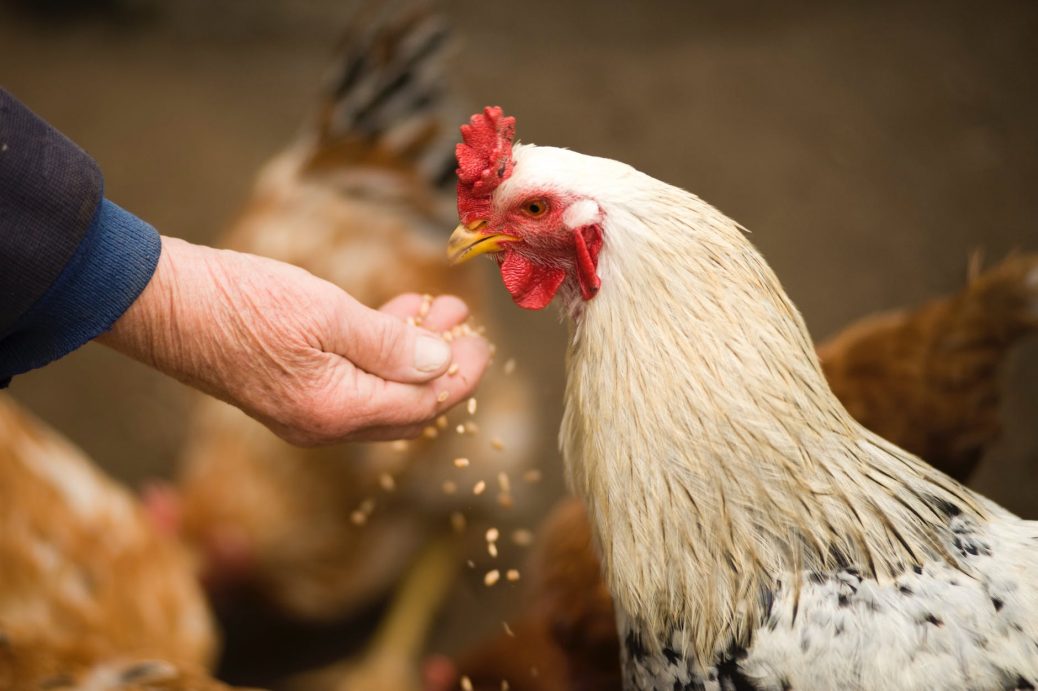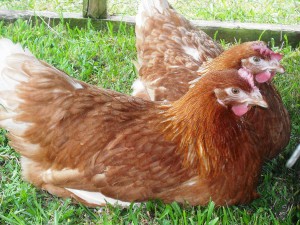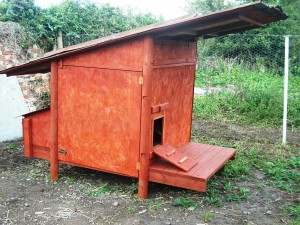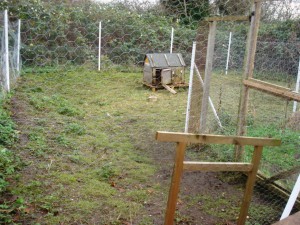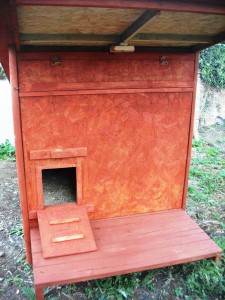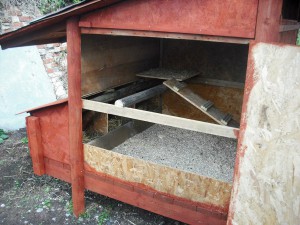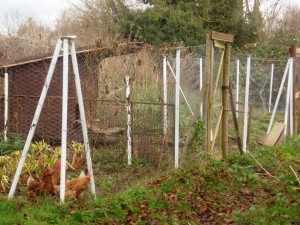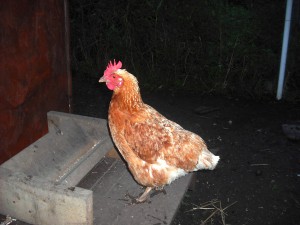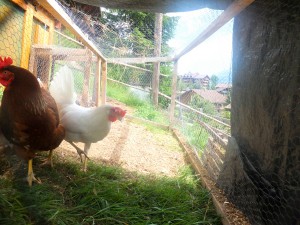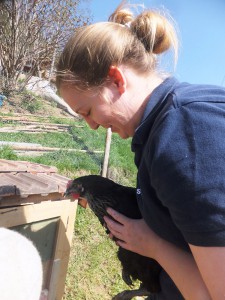By Katy Runacres
Making a chicken coop should not have to cost a fortune. Many thrifty people make them out of reused materials and design them independently. Recycling as much as you can is the key to a cheap coop. You can make a chicken run or coop out of most things, but here are a few ideas to begin with!
Our chicken coop, made entirely from recycled materials
The body of the coop
- wooden pallets
- large cupboards or dressers — can clear drawers and use one for nest box
- old sheds
- greenhouses — take out the glass and replace with wood, but the frame is good to keep
- old rabbit or guinea pig hutches
- potting sheds and children’s playhouses
- dog houses
- wire/cable spools
- kitchen cabinets
- recycled windows (ensure there is sufficient ventilation)
- metal frames from things such as old trampolines or playground swings
- small polytunnel frames (cover the frame with chicken wire, wood or another material to create an enclosure with overhead protection)
- old cars, caravans, horse trailers
The main body of the coop and run can be whatever shape you want for the land being used. We have had large rectangular runs with connecting doors and gates for the chickens between the areas; we can let them get into different areas at certain times. The coop can be on the flat or have a number of levels to it — our chickens have one level, but they have a little platform which they can jump up to and sit on. Additionally, the main thing to include in your chicken coop are perches for all the chickens to sit on comfortably at nighttime. Each chicken should have approximately 20 centimeters of space to perch on. We use wooden perches as they are easy to disinfect and clean at the same time as the rest of the coop. The perch needs to be the right thickness for the bird to sit on easily, so they can grip the perch with their feet without overstretching or gripping. Also, good ventilation for the chicken house is important, especially in the hot summer.
It’s good to include gates that section off different areas.
The coop needs to be off the ground — we put our chicken house on stilts to keep it off the damp ground and to deter rodents from getting in. Our chickens have a veranda area at the front of their house, so even during wet or snowy conditions they can still be outside for a bit and get fresh air! Their chicken house is made out of recycled wooden pallets, reused wood, and reused corrugated iron sheets.
As you can see here, the coop is off the ground and we’ve provided a nice veranda for the chickens to enjoy.
The entrance gates and walls
- old garden gates
- garden fences
- shed doors
- work surface or cabinet doors
- corrugated iron sheets
- bottoms and lids off tin cans used in a shingle technique — good for covering the wooden area with to make more waterproof.
- old satellite dishes make great roofs
Make a chicken tractor
- bikes and wheels
- old trailers
- old parcel carriers with wheels
Additional items or ideas to incorporate
- Put a compost bin underneath — it can add heat under the henhouse for the winter. As the compost waste decomposes, it creates heat, warming up your chickens’ floor!
- Incorporate a water butt to the back of the run — useful for gardening and can connect and be included in the design.
- Make a nest box — think old buckets, baskets, wooden crate boxes, old wheels, and small dog beds.
- Make covered areas outside to protect the poultry from the elements.
- Create an off-the-ground surface for the chickens to explore. Think about ramps, veranda areas, platforms, stairs, and extra perches.
- Include a sand bath area.
Our chickens have a perch, a platform, a ramp, and nesting boxes
See what materials you can gather from other smallholders, friends, or farms. After you have gathered your resources, you can then begin to design and plan your chicken coop and run. Make some rough paper plans, then go out and check the area where you are planning to build. You can always alter and improve on the design as you go along.
Thinking about potential predators
There are a number of different predators that will be after your chickens. Land-based predators come in all shapes and sizes. Foxes, minks, weasels, raccoons, skunks, dogs, and sometimes overzealous cats have been known to kill chickens. Even large rats can cause injury to a chicken. We can take a number of precautions as responsible poultry keepers to deter or prevent these predators from getting our flock.
Always dig in the fencing quite deep. We dig the posts and chicken wire we use for fencing approximately three feet underground. This involves digging a three-foot trench, placing the posts and chicken wire fencing in the trench, then digging back the soil on both sides of the fence. This type of fencing seems to deter the foxes and other land predators.
Dig the fencing in at least three feet deep.
Another key element to deterring land predators is to not keep the chicken food outside — it will attract predators, especially rats.
Getting your chickens in before it gets dark is a simple yet effective deterrent, and a regular human presence helps, too. Once animals such as foxes find you are lax about getting your poultry in on time or that you do not visit your chickens often, they may loiter about, waiting for an opportunity. There is new equipment available now which simulates a pair of human eyes watching the predator. You can set these up around your enclosure — they let out two small red light beams which to a fox or cat appear to be human eyes looking out.
Elevating the food off the ground and bringing it in at night helps keep away predators.
Flying predators such as eagles can be dangerous to chickens — especially young chicks, although an eagle will happily take a chicken if an opportunity arises for it to do so. An overhead mesh or wire on the enclosure and coop are an essential in areas with flying predators. Our chickens have to be in an enclosed area made with chicken wire and wood beams to prevent other birds from getting in.
A run with wire overhead is the best way to keep out predatory birds.
The main way to prevent predator attacks is to regularly check the chicken run and coop for any damage, deterioration, or forced attempted entry by predators. Also, check over your chickens regularly for general health.
The author checks up on her chickens regularly to make sure they are healthy.
Conclusion
I hope these ideas and my experience in keeping chickens and bantams in different conditions has given you some ideas to use in your next poultry project.

